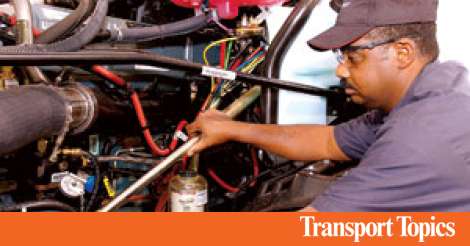I used to do this kind of work when I was in the private sector; quality assurance, statistical process controls, etc.
The "B" series rating has been around a long time in commercial and industrial applications. Not just engines, but all manner of lubricated things (gearboxes for conveyor systems, bearings for massive HVAC system air movers, huge air compressors, electric motors, PCBs, etc).
Back in the day, the "B" statement literally meant "bearing" life. But the concept of quality assurance has grown exponentially over the last few decades, and so "BX" really just is a statement about lifespan at some failure %. It no longer is limited to the concept of bearings; it's just an overall statement for any component or assembly ... ("B" refers to the component or assembly, and "X" refers to a %).
In the light duty worlds (cars, SUVs, light trucks, motorcycles, etc) you'll never see "B" life statements. Too many downsides and few upsides for the OEM to make any claims here. You'll get a new car warranty typically stated in months/mile limits, and that's about the end of anything you'll be assured of.
Much of this topic (bearing life, or equipment life in a broader sense) is based on the concept of MTTF; meat time to failure. (Or MTtF, or MTF ...)
The makers of product "X" will often do analysis studies and see how long their product takes to fail in controlled, typically expected conditions. They will often rate these at some confidence interval; perhaps 90%, 95%, 50%, or whatever they choose. When they test the components, the closer the failures are to each other in terms of duration, the higher the confidence intervals. The duration of lifespan is often stated in a UoM relevant to the expected use (hours, on/off cycles, etc).
OEs who run mass production companies test samples and make representative statements based on mathematical formulations. It's not like they can test every single unit made; that's impossible in mass production. So they sample units and use statistical modeling to get an idea of the quality of the products and processes.
Examples: (note ... I'm making up fictitious numbers for the examples below; I've not run the data on these, so my estimates are likely a tad off, but you'll get the point)
Let's talk about a blower motor assembly for an HVAC application in the car (the air mover in the passenger compartment).
Say the maker tests five blower assemblies, and runs them in cyclic operation. They decide to rate the blowerlife in hours. There are several considerations that play into the failures, but the ultimate goal is to make the blowers fail; that's the only way they will be able to project a lifespan. This is because it doesn't matter to the end user if the blower windings failed, or the blower bearings failed, or the blower wheel failed; all the end user knows is the blower "ain't blowing air no mo'". To the end user, it either works or it doesn't; it's a pass/fail criteria. It is important to understand that unless a failure occurs, the lifespan and confidence interval cannot be determined. So testing must take place until failure, regardless of failure mode.
So let's say the blower maker tests 5 blower assemblies and they fail with this history (we'll label them A through E)
A fails at 10,000 hours
B fails at 9,657 hours
C fails at 10,117 hours
D fails at 10,302 hours
E fails at 9, 888 hours
The failures are fairly tight together in terms of duration, so the OE can then say with some high degree of certainty that blowers will have a "lifecycle" of 10,000 hours with 95% confidence. (the average is 9992 hours, and the grouping is very tight; a small stardard deviation)
But now let's say the blower failures are much further separated ...
A fails at 10,000 hours
B fails at 6,018 hours
C fails at 13, 657 hours
D fails at 9, 002 hours
E fails at 11, 690 hours
The failures are not as tightly grouped, even though the average is still close to the group above (avg of 10,073 hrs here, but with much larger variation). So the confidence interval may only be 50%, still close to that 10,000 hour mark.
The rating of equipment lifespan in quality circles centers around two things:
- the expectation average duration until failure
- the percentage of items likely to fail at that stated duration
Hence, a commercial trucking engine maker might state "Our new RoadMax engine is B50 at 1.3M miles". Meaning that 50% of the engines are expected to last in "normal" service to 1.3M miles.

 www.ttnews.com
www.ttnews.com

